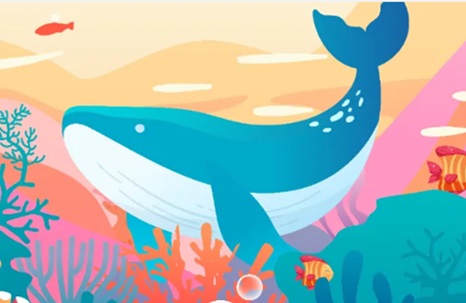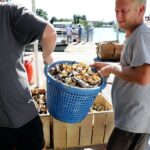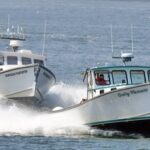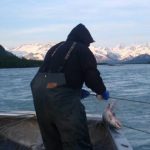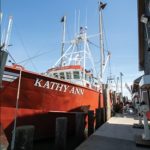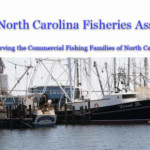Tag Archives: BOEM
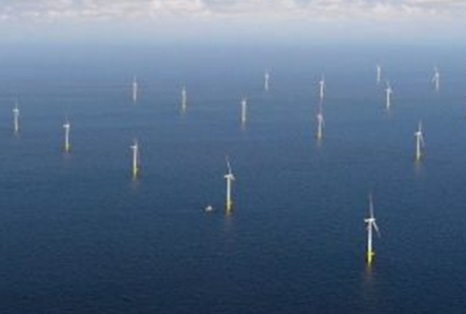
U.S. Offshore Wind: Election 2024 May Redefine the Sector
The US offshore wind industry is at a crucial turning point. After several years of growth under the Biden administration, the sector faces potential reconfiguration depending on the outcome of the 2024 presidential election. On the one hand, a Donald Trump victory could redirect the country’s energy priorities towards conventional resources, such as offshore oil and gas. On the other, a Kamala Harris victory would mean a continuation of current ambitions, including the goal of 30 GW of installed capacity by 2030. Commercial fishing groups and other interested parties challenging these projects could find an ally in a Trump administration. Organizations such as the New England Fishermen’s Stewardship Association (NEFSA) have already voiced concerns about the impacts of offshore wind projects on the marine environment and fisheries. more, >>CLOCK TO READ<< 10:36
Coos County Commissioners question offshore wind farms
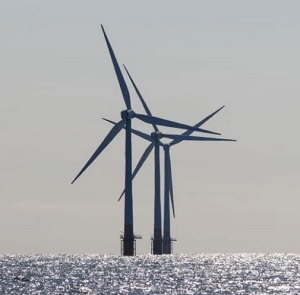 Coos County commissioners have a number of questions and concerns about a proposed offshore wind farm. In a letter dated Sept. 3 to Gov. Tina Kotek, Commissioners Rod Taylor, John Sweet and Robert “Bob” Main have posed several questions they would like the state to ask the U.S. Bureau of Ocean Energy Management (BOEM). On Aug. 29, the U.S. Department of Interior, which encompasses BOEM, announced the final sale notice for offshore wind leasing for one site offshore 10-15 miles between Reedsport and Florence and another 6-10 miles offshore between Brookings and Gold Beach. Commissioners are raising their questions as the result of the “current environmental crisis” that has occurred off Nantucket, MA, resulting from wind turbine blade failures and breakage. The commissioners also are sending their questions to other coastal county commissioners “in hope that they too will voice their concerns with BOEM’s offshore wind plan in Oregon.” more, >>CLICK TO READ<< 07:49
Coos County commissioners have a number of questions and concerns about a proposed offshore wind farm. In a letter dated Sept. 3 to Gov. Tina Kotek, Commissioners Rod Taylor, John Sweet and Robert “Bob” Main have posed several questions they would like the state to ask the U.S. Bureau of Ocean Energy Management (BOEM). On Aug. 29, the U.S. Department of Interior, which encompasses BOEM, announced the final sale notice for offshore wind leasing for one site offshore 10-15 miles between Reedsport and Florence and another 6-10 miles offshore between Brookings and Gold Beach. Commissioners are raising their questions as the result of the “current environmental crisis” that has occurred off Nantucket, MA, resulting from wind turbine blade failures and breakage. The commissioners also are sending their questions to other coastal county commissioners “in hope that they too will voice their concerns with BOEM’s offshore wind plan in Oregon.” more, >>CLICK TO READ<< 07:49
Fishermen Taking Aim At Offshore Wind Projects Across Texas
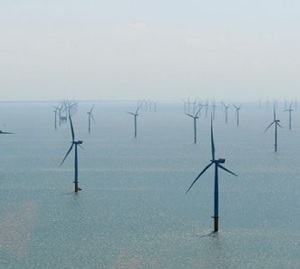 Fishermen are taking aim at offshore wind projects across Texas and the United States. On the same day that the Biden Administration pulled the plug on the second lease auction of a major proposed offshore wind project near the LA-TX border, the Bureau of Ocean Energy Management (BOEM) announced that it had been approached by “Hecate Energy Gulf Wind LLC (Hecate Energy) to acquire commercial wind energy lease(s) on the Outer Continental Shelf (OCS) in the Gulf of Mexico.” This potential project would transform thousands of aquatic acres into a wind farm. more, >>CLICK TO READ<< 17:04
Fishermen are taking aim at offshore wind projects across Texas and the United States. On the same day that the Biden Administration pulled the plug on the second lease auction of a major proposed offshore wind project near the LA-TX border, the Bureau of Ocean Energy Management (BOEM) announced that it had been approached by “Hecate Energy Gulf Wind LLC (Hecate Energy) to acquire commercial wind energy lease(s) on the Outer Continental Shelf (OCS) in the Gulf of Mexico.” This potential project would transform thousands of aquatic acres into a wind farm. more, >>CLICK TO READ<< 17:04
Biden – Harris Administration Approves Nation’s Tenth Offshore Wind Project
 The Biden-Harris administration has approved the Maryland Offshore Wind Project, the nation’s tenth commercial-scale offshore wind energy project to receive federal approval. The Maryland Offshore Wind Project, developed by US Wind, could generate over 2 gigawatts of clean, renewable energy, potentially powering over 718,000 homes on the Delmarva Peninsula. The project is expected to create nearly 2,680 jobs annually over seven years during its development and construction phases. “BOEM’s Record of Decision brings us another step closer to securing final approvals later this year and getting steel in the water,” said US Wind CEO Jeff Grybowski. more, >>CLICK TO READ<< 08:19
The Biden-Harris administration has approved the Maryland Offshore Wind Project, the nation’s tenth commercial-scale offshore wind energy project to receive federal approval. The Maryland Offshore Wind Project, developed by US Wind, could generate over 2 gigawatts of clean, renewable energy, potentially powering over 718,000 homes on the Delmarva Peninsula. The project is expected to create nearly 2,680 jobs annually over seven years during its development and construction phases. “BOEM’s Record of Decision brings us another step closer to securing final approvals later this year and getting steel in the water,” said US Wind CEO Jeff Grybowski. more, >>CLICK TO READ<< 08:19
Offshore wind energy development: A David vs Goliath story
 As the aggressive pursuit to privatize and industrialize our oceans with offshore wind turbine factories marches on, the small yet powerful voices of coastal communities around the nation continues to fight to be heard in the process. It is a veritable David versus Goliath story. Closer to home in Oregon, I believe that Goliath may be the elitists who live in urban settings like Portland and Salem who believe that they know best what the coastal residents of Oregon need. Oregon is not unique; however, this story is unfolding around the nation where urbanites believe they know best for rural communities that they do not live or work in. These people tout their desire to uplift marginalized voices while they steamroll rural voices, whether it is Tribes, coastal community members, or commercial fishermen. They attempt to downplay the concerns of coastal residents, claiming “we just don’t understand”. But here’s the thing. We actually do understand. more, >>CLICK TO READ<< By Heather Mann 15:57
As the aggressive pursuit to privatize and industrialize our oceans with offshore wind turbine factories marches on, the small yet powerful voices of coastal communities around the nation continues to fight to be heard in the process. It is a veritable David versus Goliath story. Closer to home in Oregon, I believe that Goliath may be the elitists who live in urban settings like Portland and Salem who believe that they know best what the coastal residents of Oregon need. Oregon is not unique; however, this story is unfolding around the nation where urbanites believe they know best for rural communities that they do not live or work in. These people tout their desire to uplift marginalized voices while they steamroll rural voices, whether it is Tribes, coastal community members, or commercial fishermen. They attempt to downplay the concerns of coastal residents, claiming “we just don’t understand”. But here’s the thing. We actually do understand. more, >>CLICK TO READ<< By Heather Mann 15:57
BOEM seeks public input on possible wind energy areas
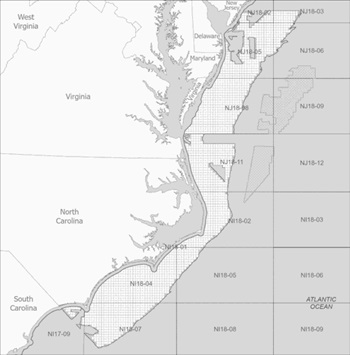 Bureau of Ocean Energy Management officials are asking for feedback on possible commercial wind energy development in areas totaling 13.47 million acres off the coasts of North Carolina, Virginia, New Jersey, Delaware and Maryland, or Central Atlantic 2. The Central Atlantic 2 Call Area “is broad to allow for flexibility to minimize conflicts with other uses, such as commercial fisheries, military activities, and vessel traffic,” according to the federal agency. This announcement builds on the input and planning that led to the first Central Atlantic lease sale on Aug. 14, the fifth offshore wind lease sale held during the Biden-Harris administration, according to BOEM. more, >>CLICK TO READ<< 09:07
Bureau of Ocean Energy Management officials are asking for feedback on possible commercial wind energy development in areas totaling 13.47 million acres off the coasts of North Carolina, Virginia, New Jersey, Delaware and Maryland, or Central Atlantic 2. The Central Atlantic 2 Call Area “is broad to allow for flexibility to minimize conflicts with other uses, such as commercial fisheries, military activities, and vessel traffic,” according to the federal agency. This announcement builds on the input and planning that led to the first Central Atlantic lease sale on Aug. 14, the fifth offshore wind lease sale held during the Biden-Harris administration, according to BOEM. more, >>CLICK TO READ<< 09:07
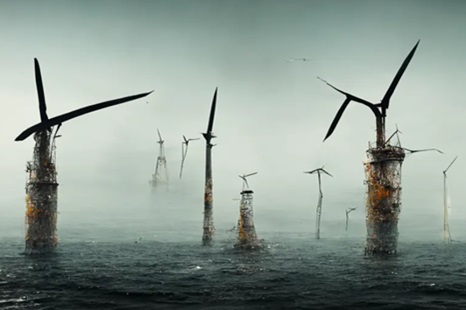
U.S. Offshore Wind: The Struggle Continues
This post updates the financial troubles of Denmark’s Ørsted, recent BOEM auctions, and pushback against Maryland governor Wes Moore. Today, operational offshore wind capacity is less than 50 megawatts versus the Biden-Harris Administration goal of 30,000 MW by 2030. Denmark’s Ørsted, the worldwide leading offshore wind developer, recorded a $575 million loss in the second quarter. In part, the loss is the result of disappointing developments in the U.S. The company has delayed commercial operation of its 704-MW Revolution Wind project off the coast of Rhode Island and Connecticut from 2025 to 2026. Ørsted’s ambitious U.S. offshore wind program has been lagging, despite solid support (subsidies, permits) from the Biden administration. more, >>CLICK TO READ<< 06;50
US Wind to offer compensation package to local fishermen
 This week, US Wind’s senior director of external affairs, Nancy Sopko, confirmed that the company is developing a mitigation program for commercial and for-hire recreational fishermen. The announcement comes a week after the Worcester County Commissioners shared concerns about a potential agreement. “US Wind is adopting a compensation program to benefit commercial and for-hire recreational fishermen, a measure BOEM (Bureau of Ocean Energy Management) recognized as effective in our FEIS (Federal Environmental Impact Statement),” Sopko said. “US Wind and the Maryland Department of Natural Resources signed a Letter of Intent in July 2024 to develop a fisheries compensatory mitigation program by early 2025. Such a mitigation program could include financial assistance, assistance with equipment upgrades or training, and other services. We look forward to working with the state on outreach to the fishing community to further develop details of this mitigation program.” more, >>CLICK TO READ<< 18:09
This week, US Wind’s senior director of external affairs, Nancy Sopko, confirmed that the company is developing a mitigation program for commercial and for-hire recreational fishermen. The announcement comes a week after the Worcester County Commissioners shared concerns about a potential agreement. “US Wind is adopting a compensation program to benefit commercial and for-hire recreational fishermen, a measure BOEM (Bureau of Ocean Energy Management) recognized as effective in our FEIS (Federal Environmental Impact Statement),” Sopko said. “US Wind and the Maryland Department of Natural Resources signed a Letter of Intent in July 2024 to develop a fisheries compensatory mitigation program by early 2025. Such a mitigation program could include financial assistance, assistance with equipment upgrades or training, and other services. We look forward to working with the state on outreach to the fishing community to further develop details of this mitigation program.” more, >>CLICK TO READ<< 18:09
BOEM issues first floating offshore wind lease in the US
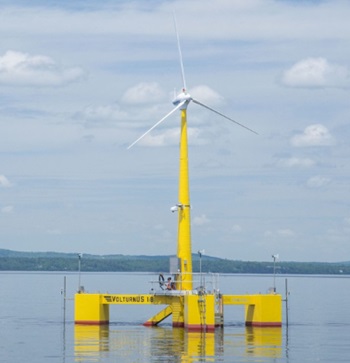 The lease area where the floating turbines will be deployed covers an area of approximately 15,000 acres located 28 nautical miles offshore Maine on the US Outer Continental Shelf. The area could allow for the deployment of up to 12 floating offshore wind turbines capable of generating up to 144 MW of renewable energy. The research array will allow the state, the fishing community, wildlife experts, the offshore wind industry, and others to conduct in depth studies and thoroughly evaluate floating offshore wind as a renewable energy source. As proposed, the research array will use floating foundation technology designed by the University of Maine and deployed by its development partner, Diamond Offshore Wind. UMaine’s floating platform, known as VolturnUS, was recently awarded a US$12.5M grant from the US Department of Energy. more, >>CLICK TO READ<< 07:28
The lease area where the floating turbines will be deployed covers an area of approximately 15,000 acres located 28 nautical miles offshore Maine on the US Outer Continental Shelf. The area could allow for the deployment of up to 12 floating offshore wind turbines capable of generating up to 144 MW of renewable energy. The research array will allow the state, the fishing community, wildlife experts, the offshore wind industry, and others to conduct in depth studies and thoroughly evaluate floating offshore wind as a renewable energy source. As proposed, the research array will use floating foundation technology designed by the University of Maine and deployed by its development partner, Diamond Offshore Wind. UMaine’s floating platform, known as VolturnUS, was recently awarded a US$12.5M grant from the US Department of Energy. more, >>CLICK TO READ<< 07:28
Maryland Governor Wes Moore Addresses Local Concerns for Offshore Wind Projects
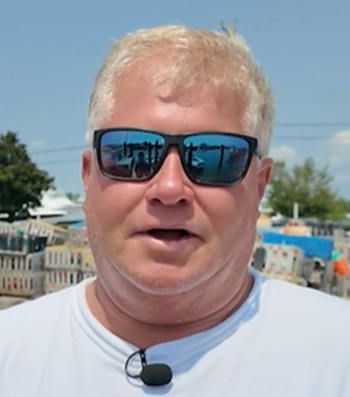 Maryland Governor Wes Moore was in Ocean City on Friday. It gave us a chance to speak with him about the local community’s strong opposition for offshore wind. Two months ago, Governor Moore signed a memorandum of understanding with the Bureau of Ocean Energy Management (BOEM) to open up more lease areas of Maryland’s coast. While the state’s involvement in moving offshore wind projects forward could open up new jobs, commercial fisherman are still worried it will take theirs away. “They’re trying to steal our grounds, they’ve stolen our bottom, they’ve stolen the area that we fish in, their last resort is to buy the place where we sell our fish at and once they accomplish that we have nowhere else to work,” said Jimmy Hahn, a commercial fisherman who operates out of the West Ocean City Harbor. Moore said this can be a win-win situation, as long as state leaders put in the work. Video, more, >>CLICK TO READ<< 12:24
Maryland Governor Wes Moore was in Ocean City on Friday. It gave us a chance to speak with him about the local community’s strong opposition for offshore wind. Two months ago, Governor Moore signed a memorandum of understanding with the Bureau of Ocean Energy Management (BOEM) to open up more lease areas of Maryland’s coast. While the state’s involvement in moving offshore wind projects forward could open up new jobs, commercial fisherman are still worried it will take theirs away. “They’re trying to steal our grounds, they’ve stolen our bottom, they’ve stolen the area that we fish in, their last resort is to buy the place where we sell our fish at and once they accomplish that we have nowhere else to work,” said Jimmy Hahn, a commercial fisherman who operates out of the West Ocean City Harbor. Moore said this can be a win-win situation, as long as state leaders put in the work. Video, more, >>CLICK TO READ<< 12:24
Ocean City prepares federal lawsuit over offshore wind projects.
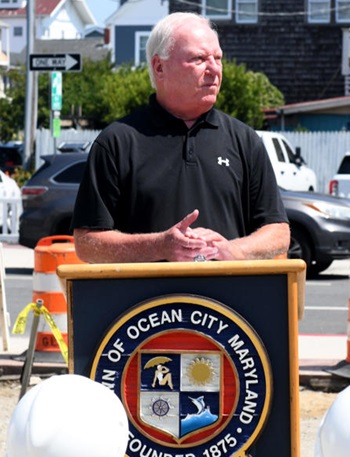 During the most recent normal legislative meeting, Ocean City Mayor Rick Meehan noted he was not surprised members of the municipal government did not have all the details of the proposed offshore wind development by US Wind. He cited the planned 114 turbines would be “between 10.7 to 10.9 miles off our coast. At a minimum they will be 938 feet tall, and that’s three and half times taller than any building in Ocean City. If built on land, they would be the tallest structures in Maryland.” The federal government leased the land on which these turbines are slated to be built according to the company’s federal permit application. “We’ve decided if the (federal) Bureau of Ocean Energy Management provides a favorable Record of Decision on US Wind’s permit application, the Town of Ocean City will file suit against the BOEM,” Meehan said. more, >>CLICK TO READ<< 08:02
During the most recent normal legislative meeting, Ocean City Mayor Rick Meehan noted he was not surprised members of the municipal government did not have all the details of the proposed offshore wind development by US Wind. He cited the planned 114 turbines would be “between 10.7 to 10.9 miles off our coast. At a minimum they will be 938 feet tall, and that’s three and half times taller than any building in Ocean City. If built on land, they would be the tallest structures in Maryland.” The federal government leased the land on which these turbines are slated to be built according to the company’s federal permit application. “We’ve decided if the (federal) Bureau of Ocean Energy Management provides a favorable Record of Decision on US Wind’s permit application, the Town of Ocean City will file suit against the BOEM,” Meehan said. more, >>CLICK TO READ<< 08:02
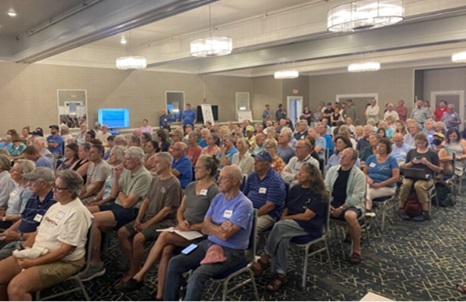
BOEM Hears Mostly Opposition at a Meeting in Eastham
Local officials on the Outer Cape have for a month been calling for the Bureau of Ocean Energy Management (BOEM) to hold a public information session here about one of eight proposed wind energy areas in the Gulf of Maine — the one sited about 20 miles off Cape Cod’s back shore — before its size and shape are approved. BOEM, the agency of the Dept. of Interior that is charged with managing the development of offshore wind, finally did that on June 17, and some 200 people turned out at the Four Points by Sheraton for it. BOEM announced the meeting only six days before it was held. Statements about possible negative effects of the development on commercial fishing dominated the meeting. Many of those who spoke identified themselves as fishermen or the wives of fishermen and said that they feared their livelihoods would be lost because of the construction of wind turbines. Truro lobsterman Dana Pazolt said he believes the cables would serve as a barrier to lobster migration. “You run the wires across the seabed, our industry is dead,” he said. more, >>CLICK TO READ<< 20:43
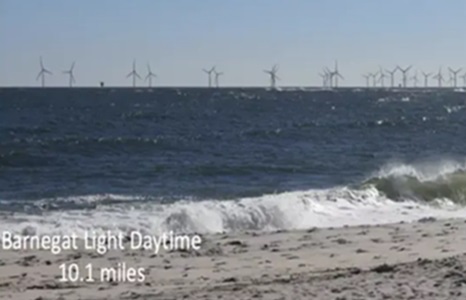
Not Ready to Get Hosed: New Jersey Offshore Wind ‘energy boondoggle’ faces fierce criticism from residents
While the Biden administration and other environmental activist groups boast that the Atlantic Shores South project, nearly nine years in the making, is another milestone in the country’s harvesting of green energy, a former U.S. Department of Energy engineer raises alarm bells that not only is this project detrimental to tourism, the ocean’s ecosystem, but it will actually raise energy costs to as high as 80% over the next 20 years. The company behind the project, Atlantic Shores Offshore Wind, LLC (Atlantic Shores), holds three different leases totaling more than 400 square miles with the Bureau of Ocean Energy Management. There are plans for two separate projects with two lease areas located off the Jersey Shore between Atlantic City and Barnegat Light and the third lease located in an area of the Atlantic Ocean known as the Bight. more, >>CLICK TO READ<< 14:45
Nantucket Group Fighting Vineyard Wind Will Take Case To U.S. Supreme Court
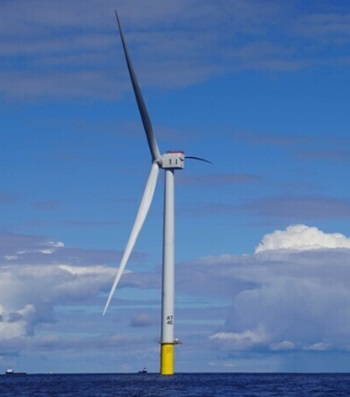 After its arguments against the Vineyard Wind project were rejected by a federal judge in April, the Nantucket group ACK 4 Whales will attempt to take its case to the U.S. Supreme Court. “There are no do-overs when the last whale is killed off,” said Val Oliver, president of ACK 4 Whales. “We will be seeking a writ of certiorari to the Supreme Court to ask for the reversal of the First Circuit’s legal errors made in our case,” Oliver added. “We believe this is the first cert. petition being filed in the wake of the Supreme Court’s decision in Loper Bright to challenge offshore wind development..” After its arguments against the Vineyard Wind project were rejected by a federal judge in April, the Nantucket group ACK 4 Whales will attempt to take its case to the U.S. Supreme Court. more. >>CLICK TO READ<< 13:45
After its arguments against the Vineyard Wind project were rejected by a federal judge in April, the Nantucket group ACK 4 Whales will attempt to take its case to the U.S. Supreme Court. “There are no do-overs when the last whale is killed off,” said Val Oliver, president of ACK 4 Whales. “We will be seeking a writ of certiorari to the Supreme Court to ask for the reversal of the First Circuit’s legal errors made in our case,” Oliver added. “We believe this is the first cert. petition being filed in the wake of the Supreme Court’s decision in Loper Bright to challenge offshore wind development..” After its arguments against the Vineyard Wind project were rejected by a federal judge in April, the Nantucket group ACK 4 Whales will attempt to take its case to the U.S. Supreme Court. more. >>CLICK TO READ<< 13:45

Will offshore wind presence get even bigger off Ocean City?
The first auction of 2024 for more land leased for offshore wind off the Delmarva Peninsula was cleared for Aug. 14 after the Bureau of Ocean Energy Management released the Central Atlantic Final Sale Notice. The notice is the last step required by the agency to hold a lease auction for the Central Atlantic region, which includes offshore areas in Delaware, Maryland and Virginia. In total, the area available for lease covers more than 275,000 acres, enough to develop up to 6.3 GW of offshore wind energy capacity. Detractors for the expansion of offshore wind in Maryland, like Rep. Andy Harris, R-Md-1st, took aim at the decision, noting there were still a number of environmental issues surrounding plans for turbines. “We should never allow foreign-owned offshore wind companies to control our energy supply — much less harm our marine life while doing it,” said a spokesperson for Harris. more, >>CLICK TO READ<< 11:51
Coalition Responds to Federal Agency Decision Approving the Atlantic Shores South Offshore Wind Project
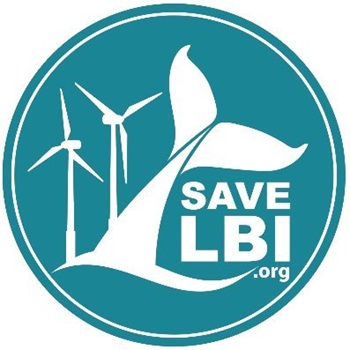 Save Long Beach Island, the coalition of citizens dedicated to protecting our oceans and New Jersey Shore communities, on July 3, 2024 denounced a federal agency’s decision to approve the Atlantic Shores South project as misguided and vowed to continue its fight against the destructive impact of placing hundreds of wind turbines in the ocean in close proximity to Long Beach Island (LBI) and other shore communities. “The project approved yesterday by the Bureau of Ocean Energy Management (BOEM) for the construction of up to 195 Wind Turbine Generators and up to 10 Offshore Substations’ off the southern coast of New Jersey is an aberration, no other country in the world is considering a wind turbine project of this turbine size and number within 9 miles off their coastline,” said Bob Stern, president and founder of Save LBI. more, >>CLICK TO READ<< 09:50
Save Long Beach Island, the coalition of citizens dedicated to protecting our oceans and New Jersey Shore communities, on July 3, 2024 denounced a federal agency’s decision to approve the Atlantic Shores South project as misguided and vowed to continue its fight against the destructive impact of placing hundreds of wind turbines in the ocean in close proximity to Long Beach Island (LBI) and other shore communities. “The project approved yesterday by the Bureau of Ocean Energy Management (BOEM) for the construction of up to 195 Wind Turbine Generators and up to 10 Offshore Substations’ off the southern coast of New Jersey is an aberration, no other country in the world is considering a wind turbine project of this turbine size and number within 9 miles off their coastline,” said Bob Stern, president and founder of Save LBI. more, >>CLICK TO READ<< 09:50
Feds say “damn the whales” in the Gulf of Maine
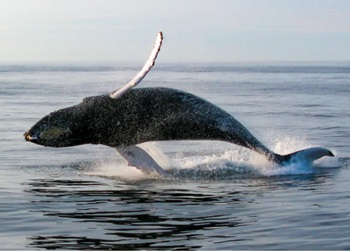 Biden’s Bureau of Ocean Energy Management (BOEM) proposes to build a huge amount of floating offshore wind in the Gulf of Maine. As required by law, it has published for public comment a draft Environmental Assessment of the area designated for this monster project. But insanely, there is no assessment of the project, just of the area without the project. I am not making this up. This place is properly called the Wind Energy Area (WEA) because that is where the wind energy will come from. BOEM says they plan to issue eight leases initially with a monster development potential of 15,000 MW. Given that 15 MW is the biggest turbine available that amounts to 1,000 or more huge turbines. A second phase might add another thousand of so. more, >>CLICK TO READ<< 12:29
Biden’s Bureau of Ocean Energy Management (BOEM) proposes to build a huge amount of floating offshore wind in the Gulf of Maine. As required by law, it has published for public comment a draft Environmental Assessment of the area designated for this monster project. But insanely, there is no assessment of the project, just of the area without the project. I am not making this up. This place is properly called the Wind Energy Area (WEA) because that is where the wind energy will come from. BOEM says they plan to issue eight leases initially with a monster development potential of 15,000 MW. Given that 15 MW is the biggest turbine available that amounts to 1,000 or more huge turbines. A second phase might add another thousand of so. more, >>CLICK TO READ<< 12:29

Offshore wind farm lease auction plan has Gulf of Maine fishermen feeling brushed aside
The prospect of hundreds of offshore wind turbines generating power in the Gulf of Maine is moving forward with plans to auction eight leases in a large swath of waters off the New England coast. Jerry Leeman III, the CEO of the New England Fishermen’s Stewardship Association, said there’s not enough data to support the areas that have been chosen for wind development. As now laid out, the plan could take away valuable fishing grounds from New England’s fishing fleet, pose navigational hazards and create new environmental threats, he said. “We still have more questions than we have answers,” he said. “Yet we’re moving ahead with the leasing ahead of the science.” more, >>CLICK TO READ<< 12:37
Hello Mayors: FOIA Emails Suggest US Wind Requested Coastal Towns Keep Initial Offshore Wind Talks Private
 New light is being shed on offshore wind company US Wind’s talks with the mayors comprising the Association of Coastal Towns (ACT) with the release of email correspondence between the two. US Wind and the ACT have been in talks over US Wind’s proposed offshore projects off the coast of Maryland that would potentially see a power cable landing in Delaware Seashore State Park. US Wind has also presented community benefits packages to the Coastal Towns which include proposed annual payments over twenty years worth $2 million to each town. Following a Freedom of Information Act request (FOIA) submitted to the ACT, WBOC has received copies of the emails between ACT and US Wind that suggest the offshore wind company’s desire to keep the initial discussions shielded from the public. more, >>CLICK TO READ<< 08:55
New light is being shed on offshore wind company US Wind’s talks with the mayors comprising the Association of Coastal Towns (ACT) with the release of email correspondence between the two. US Wind and the ACT have been in talks over US Wind’s proposed offshore projects off the coast of Maryland that would potentially see a power cable landing in Delaware Seashore State Park. US Wind has also presented community benefits packages to the Coastal Towns which include proposed annual payments over twenty years worth $2 million to each town. Following a Freedom of Information Act request (FOIA) submitted to the ACT, WBOC has received copies of the emails between ACT and US Wind that suggest the offshore wind company’s desire to keep the initial discussions shielded from the public. more, >>CLICK TO READ<< 08:55
Offshore wind is gearing up to bulldoze the ocean
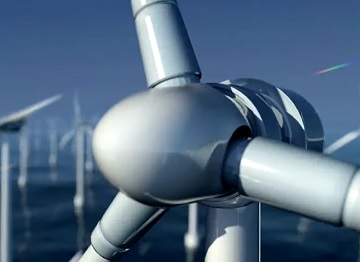 The Biden Administration has recently produced a wave of plans and regulatory actions aimed at building a monstrous amount of destructive offshore wind. No environmental impact assessment is included. Time scales range from tomorrow to 2050. Here is a quick look at some of it, starting with the Grand Plan. “Pathways to Commercial Liftoff: Offshore Wind” is the grandiose title of the Energy Department’s version of Biden’s vision. Their basic idea is that having successfully traversed the unexpected cost crisis, offshore wind is ready to take off. This offshore bulldozer must be stopped before it is too late. more, >>CLICK TO READ<< 06:03
The Biden Administration has recently produced a wave of plans and regulatory actions aimed at building a monstrous amount of destructive offshore wind. No environmental impact assessment is included. Time scales range from tomorrow to 2050. Here is a quick look at some of it, starting with the Grand Plan. “Pathways to Commercial Liftoff: Offshore Wind” is the grandiose title of the Energy Department’s version of Biden’s vision. Their basic idea is that having successfully traversed the unexpected cost crisis, offshore wind is ready to take off. This offshore bulldozer must be stopped before it is too late. more, >>CLICK TO READ<< 06:03
Updated Reports Available on Fishery and Port Impacts Associated with Offshore Wind Development Along the U.S. Atlantic Coast
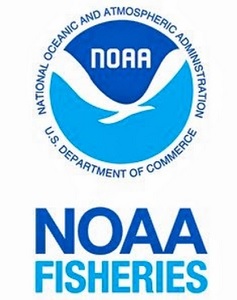 NOAA Fisheries updated and expanded existing analyses and reports to help the public better understand the impacts of offshore wind development on commercial and recreational fisheries along the U.S. Atlantic Coast. The new reports build upon the previously developed analyses, but now include updated data and additional analysis on impacts to ports and cumulative impacts from all Greater Atlantic offshore wind lease areas combined. We added 2022 fishery data to both commercial and party/charter impact summaries for each lease area and, for some approved projects, finalized export cable corridors, as reported by BOEM’s GIS website. more, >>CLICK TO READ<< 17:53
NOAA Fisheries updated and expanded existing analyses and reports to help the public better understand the impacts of offshore wind development on commercial and recreational fisheries along the U.S. Atlantic Coast. The new reports build upon the previously developed analyses, but now include updated data and additional analysis on impacts to ports and cumulative impacts from all Greater Atlantic offshore wind lease areas combined. We added 2022 fishery data to both commercial and party/charter impact summaries for each lease area and, for some approved projects, finalized export cable corridors, as reported by BOEM’s GIS website. more, >>CLICK TO READ<< 17:53

Breaking: Dominion Energy Atlantic Coast Offshore Wind Project Delayed by Lawsuit Seeking to Protect Endangered Right Whale
An order by a federal judge on Monday delayed the start of “pile driving” construction for a massive wind project off the Atlantic Coast by Dominion Energy. Judge Loren L. AliKhan convened an expedited status conference hearing in response to a coalition of three public interest groups—The Heartland Institute, the Committee for a Constructive Tomorrow (CFACT), and the National Legal and Policy Center (NLPC)—suing Dominion and the Biden administration, claiming they have not done the legally required research to determine the project won’t harm the critically endangered North Atlantic right whale. more, >>CLICK TO READ<< 14:33
2.4 GW Offshore Wind Energy Project Opposed In Brookings
 Following a letter of opposition by the Brookings City Council to the Bureau of Energy Management (BOEM) about the latter’s Offshore Wind Energy Project on Monday, it is likely that the council will formally oppose the development of windmills off the Oregon Coast. The WEA (wind energy area) in Brookings and Coos Bay potentially has 2.4 gigawatts of clean renewable energy according to the BOEM press release and would comprise 133,000 acres situated about 18 miles off the coast. more, >>CLICK TO READ<< 08:35
Following a letter of opposition by the Brookings City Council to the Bureau of Energy Management (BOEM) about the latter’s Offshore Wind Energy Project on Monday, it is likely that the council will formally oppose the development of windmills off the Oregon Coast. The WEA (wind energy area) in Brookings and Coos Bay potentially has 2.4 gigawatts of clean renewable energy according to the BOEM press release and would comprise 133,000 acres situated about 18 miles off the coast. more, >>CLICK TO READ<< 08:35
A submerged concern: offshore wind cables
 As offshore wind turbines undergo construction in waters south of the Vineyard, and with some already standing and delivering power, the debates on the Island regarding the industry continue. John Keene, president of the Martha’s Vineyard Fishermen’s Preservation Trust, told the Times that some in the fishing industry are nervous about how the electromagnetic field from the cables can affect marine life. Keene said the concern is that the fields emitted from cables could act like a fence, particularly for migratory species, and impact the behavior of marine species. “There’s a lot of unknowns,” he said. more, >>CLICK TO READ<< 07:14
As offshore wind turbines undergo construction in waters south of the Vineyard, and with some already standing and delivering power, the debates on the Island regarding the industry continue. John Keene, president of the Martha’s Vineyard Fishermen’s Preservation Trust, told the Times that some in the fishing industry are nervous about how the electromagnetic field from the cables can affect marine life. Keene said the concern is that the fields emitted from cables could act like a fence, particularly for migratory species, and impact the behavior of marine species. “There’s a lot of unknowns,” he said. more, >>CLICK TO READ<< 07:14
IS THE G.A.O. SLOWWALKING ITS INVESTIGATION OF OFFSHORE WIND IMPACTS? By Jim Lovgren
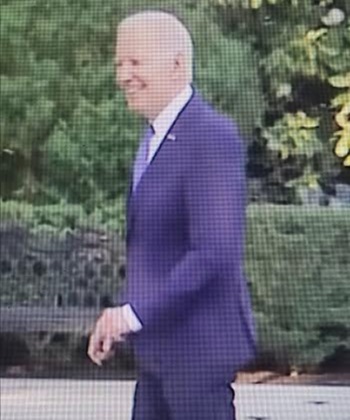 On June 15, 2023, Congressman Chris Smith issued a press release touting the acceptance by the General Accountability Office [GAO], of a request by the House Natural Resources Committee to investigate a wide range of issues related to the development of offshore wind. The Committee letter, signed by Chairman Bruce Westerman, was submitted on May 15 th , 2023, almost a year ago. I bring this up because the average time-length of most GAO investigations is three months. Which begs the question; Is the Biden administration “slow-walking” the GAO investigation? Slow-walking is the act of purposefully delaying action by stalling, stonewalling, making excuses of how hard it is to do, and other whiney efforts at delaying an investigation until it fails because it is too late. It is the bureaucrat’s favorite weapon of choice when forced to disclose vital information, that their politician benefactors don’t want exposed. more, >>click to read<< 06:10
On June 15, 2023, Congressman Chris Smith issued a press release touting the acceptance by the General Accountability Office [GAO], of a request by the House Natural Resources Committee to investigate a wide range of issues related to the development of offshore wind. The Committee letter, signed by Chairman Bruce Westerman, was submitted on May 15 th , 2023, almost a year ago. I bring this up because the average time-length of most GAO investigations is three months. Which begs the question; Is the Biden administration “slow-walking” the GAO investigation? Slow-walking is the act of purposefully delaying action by stalling, stonewalling, making excuses of how hard it is to do, and other whiney efforts at delaying an investigation until it fails because it is too late. It is the bureaucrat’s favorite weapon of choice when forced to disclose vital information, that their politician benefactors don’t want exposed. more, >>click to read<< 06:10
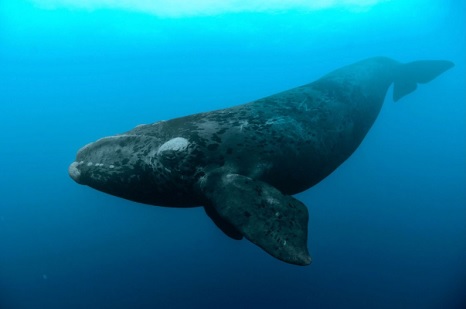
OFFSHORE WIND AND WHALES – A collection of articles from fisherynation.com By Jim Lovgren
After over forty-five years as a commercial fisherman out of Point Pleasant NJ, I sold my boat the Shadowfax, and retired, moving to California. My experience as a fisherman began in the early 1970’s, and I observed and learned an encyclopedia of knowledge concerning fishing, the environment, and fishery management, including politics. As I observed the continuing massacre and the lies denying them by government and media puppets, I under took an effort to expose the truth concerning offshore wind. The following articles are listed in order of their appearance in Fisherynation.com, and are best understood by reading them in order. Just click on the title of an article you’d like to read. more, >>click to read<< 15:09
NOAA/NMFS Ignores Dangerous Sound Levels from Pile Driving – By Jim Lovgren
 A new recently released report from Rand Acoustics, LLC scientifically documented that the stated sound levels created by the pile driving of wind turbine stanchions into the seafloor is much louder than the NOAA approved levels. In a study dated November 2, 2023, the researchers used acoustic listening devises to record the underwater sounds being created from piledriving by the crane ship “Orion” in the Vineyard wind BOEM lease area OCS-A 0501 southwest of Nantucket Island. Prior to this research, Rand Acoustics documented the underwater sound levels being produced by some of the research vessels using sonar and seismic devises to examine and document the seafloor prior to turbine construction. This research proved that the sound levels produced by these research vessels exceeded the stated sound levels approved by NOAA/NMFS to protect marine mammals and resulted in the documentary film “Thrown to the wind”. more, >>click to read<< 11:28
A new recently released report from Rand Acoustics, LLC scientifically documented that the stated sound levels created by the pile driving of wind turbine stanchions into the seafloor is much louder than the NOAA approved levels. In a study dated November 2, 2023, the researchers used acoustic listening devises to record the underwater sounds being created from piledriving by the crane ship “Orion” in the Vineyard wind BOEM lease area OCS-A 0501 southwest of Nantucket Island. Prior to this research, Rand Acoustics documented the underwater sound levels being produced by some of the research vessels using sonar and seismic devises to examine and document the seafloor prior to turbine construction. This research proved that the sound levels produced by these research vessels exceeded the stated sound levels approved by NOAA/NMFS to protect marine mammals and resulted in the documentary film “Thrown to the wind”. more, >>click to read<< 11:28
East End fishermen uneasy over wind farm South Fork Wind
 Late last year, Gov. Kathy Hochul called South Fork Wind, which is projected to eliminate hundreds of millions of tons of carbon emissions annually, a “major milestone” in the state’s “nation-leading effort to generate reliable, renewable clean energy. “But at least one East End community remains staunchly opposed to wind farms: commercial fishermen — who say that the massive, 50-story turbines could irreparably damage the local marine ecosystem and displace them from areas they’ve fished for decades or even generations. more, >>click to read<< 08:12
Late last year, Gov. Kathy Hochul called South Fork Wind, which is projected to eliminate hundreds of millions of tons of carbon emissions annually, a “major milestone” in the state’s “nation-leading effort to generate reliable, renewable clean energy. “But at least one East End community remains staunchly opposed to wind farms: commercial fishermen — who say that the massive, 50-story turbines could irreparably damage the local marine ecosystem and displace them from areas they’ve fished for decades or even generations. more, >>click to read<< 08:12
Oregon seafood industry calls on Gov. Tina Kotek to halt offshore wind energy development
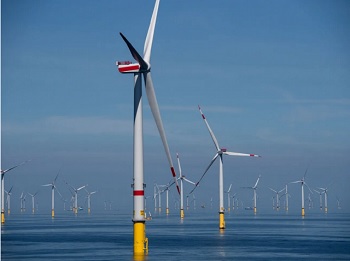 A coalition of independent fishing boat operators, seafood companies and industry groups is calling on Gov. Tina Kotek to ask the federal government to stop a planned auction for floating wind energy projects off the Oregon Coast. In a letter to Kotek on Tuesday, the more than 100 signatories said she should stop the U.S. Bureau of Ocean Energy Management from moving forward with its plan to auction offshore wind site leases until the state has finalized its own roadmap for offshore wind development. “We’re saying no auction until the roadmap is complete,” said Heather Mann, executive director of the Newport-based Midwater Trawlers Cooperative, which signed the letter. more, >>click to read<< 12:43
A coalition of independent fishing boat operators, seafood companies and industry groups is calling on Gov. Tina Kotek to ask the federal government to stop a planned auction for floating wind energy projects off the Oregon Coast. In a letter to Kotek on Tuesday, the more than 100 signatories said she should stop the U.S. Bureau of Ocean Energy Management from moving forward with its plan to auction offshore wind site leases until the state has finalized its own roadmap for offshore wind development. “We’re saying no auction until the roadmap is complete,” said Heather Mann, executive director of the Newport-based Midwater Trawlers Cooperative, which signed the letter. more, >>click to read<< 12:43






